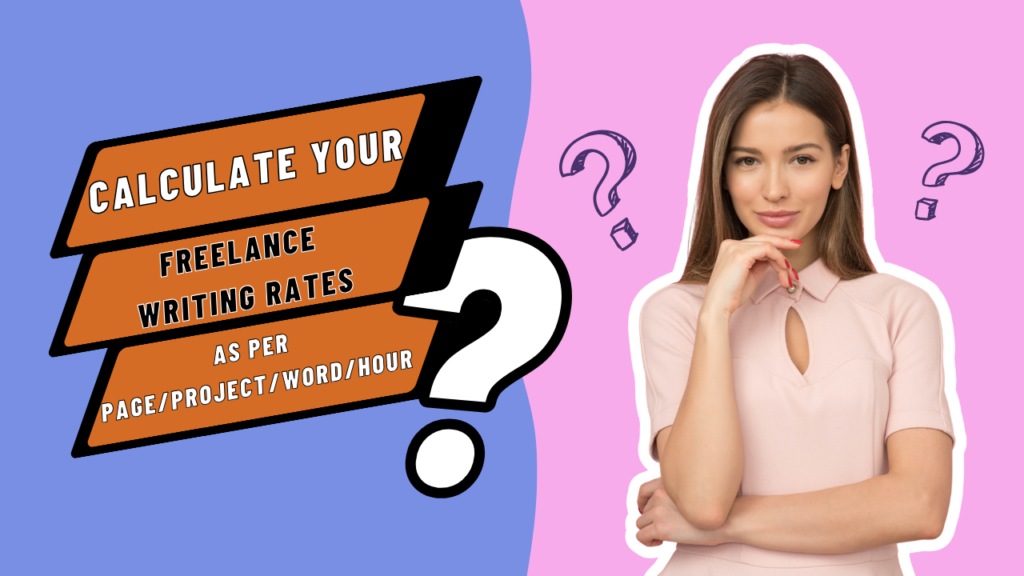Freelance writers often opt for independence to shape their careers, prioritizing flexibility and control. Choosing your rates, work hours, and project selection is a perk of freelancing. But setting freelance writing rates, especially for newcomers, or reassessing existing rates can be a challenge. Understanding industry standards is vital.
How to Set Freelance Writing Rates:
Types of Rates:
- By project (flat-rate)
- By hour
- By word
- By page
- Retaining fee
Considerations for Setting Rates:
- Time for writing
- Experience level
- One-off or ongoing work
- Type of Writing
- Type of client
- Complexity
- Deadline
For beginners, starting with lower rates to build a reputation and garner positive reviews is common. Rates can increase as experience grows. Pricing a project involves various factors, like research needs and word count.
For established freelancers, ensuring rates are competitive and commensurate with skills and experience is crucial.
By Project (Flat Rate):
Clients often prefer paying a fixed sum for services, especially for one-off jobs or when budget constraints exist. Charging a flat rate can be more profitable as efficiency increases. For instance, billing $300 for a two-hour piece may be more feasible than charging $150 per hour.
Advantages:
- Flexibility in work schedule
- No time tracking
- Increased hourly rate with efficiency
- Boosts productivity
Disadvantages:
- Heavy editing or changes may reduce hourly earnings
- Challenges in determining a fair price
- Potential negotiations for lower prices
Average Rates for Various Projects:
- White paper: $500 for a short piece to $5,000+ for extensive research
- Research article: $75 (beginner) to $250+ (experienced)
- Blog article: $50 (low end) to $175+ (high end)
- Social media captions: $1 to $10 per post
- Email: $25 to $50 (short) to $150 to $500+ (longer)
How to Determine Flat-Rate Project Charges:
Estimate completion time based on your usual output (words/pages per hour). Consider additional tasks like edits or research.
By Hour:
Hourly contracts suit various writing tasks, allowing for more straightforward pricing. Tools like Upwork’s Time Tracker aid in automated time logging.
Advantages:
- Simplifies pricing for multiple projects
- Ensures fair payment for additional work or revisions
- Preferred by corporate clients
Disadvantages:
- Faster work leads to lower earnings
- Excludes proposal submissions and administrative work
- May seem higher to clients despite similar earnings as project rates
Average Hourly Rates:
- Technical writer: $20-$45
- Social media writer: $25-$40
- Content writer: $15-$40
- Copywriter: $19-$45
- SEO writer: $15-$35
- Resume writer: $25-$65
- Grant writer: $35-$65
- Blog writer: $15-$35
Calculating Hourly Rate:
Consider experience, education, and market rates. Multiply by ideal work hours per week for weekly and monthly estimates.
By Word:
Charging per word suits articles with strict word counts. It’s convenient for SEO or blog content.
Advantages:
- Higher returns for longer, research-light pieces
- Easy price quotes
- Comfortable for clients despite similar earnings as hourly rates
Disadvantages:
- Requires adjustments for revisions and research
- Challenges in predicting article lengths
Average Price Per Word:
- Beginner: $0.05-$0.10
- Intermediate: $0.30-$0.50
- Advanced: $1-$1.50
Calculating Per Word Rate:
Divide your rate for a specific word count by that count to get your per-word rate.
By Page:
Suitable for content like websites, ebooks, novels, and essays, charging per page simplifies pricing.
Advantages:
- Easier for longer content
- Helps quote ghostwriting rates
- Outcome-focused
Disadvantages:
- May not factor in revisions or research
- Difficulty in estimating different page lengths
Rates per Page:
- Web content: $100-$200 (short) to $500-$750 (long)
- Ebooks: $300-$500
- Novel: $20-$50 (fiction) to $75-$100 (nonfiction)
Calculating Per Page Rate:
Estimate content quantity, research needed, and word count to provide accurate quotes.
Retaining Fee:
Offers guaranteed recurring work, resembling a fixed contract. Common for blogs, social media, or email writing.
Advantages:
- Assured income
- Builds client relationships
- Enables planning for both parties
Disadvantages:
- Difficulty in rate adjustments
- Potential overworking without increased pay
- Contract closure leads to income gaps
Average Retaining Fees:
- Four blogs for $1000/month
- 30 social media posts for $500/month
- 15 emails for $1200/month
Calculating Retaining Fee:
Decide between hourly or project-based fees. Assess required work, estimate hours, and quote a fair price.
Each pricing method has pros and cons. Finding the best fit depends on the project, the client, and your working style.
Start working as a freelance writer!
If you’re first embarking on your journey as a freelance writer and choosing to work as an independent professional, then you are reimagining what a traditional work week might look like. An endless number of doors is just waiting for you to open them. Knowing how to set your rates is an important early step—after that, Wabbithire helps make finding your first freelance writing job easy. Set your freelance writing rate and begin building your reputation so you can work on projects that excite you.
Follow Wabbithire for freelance jobs.




